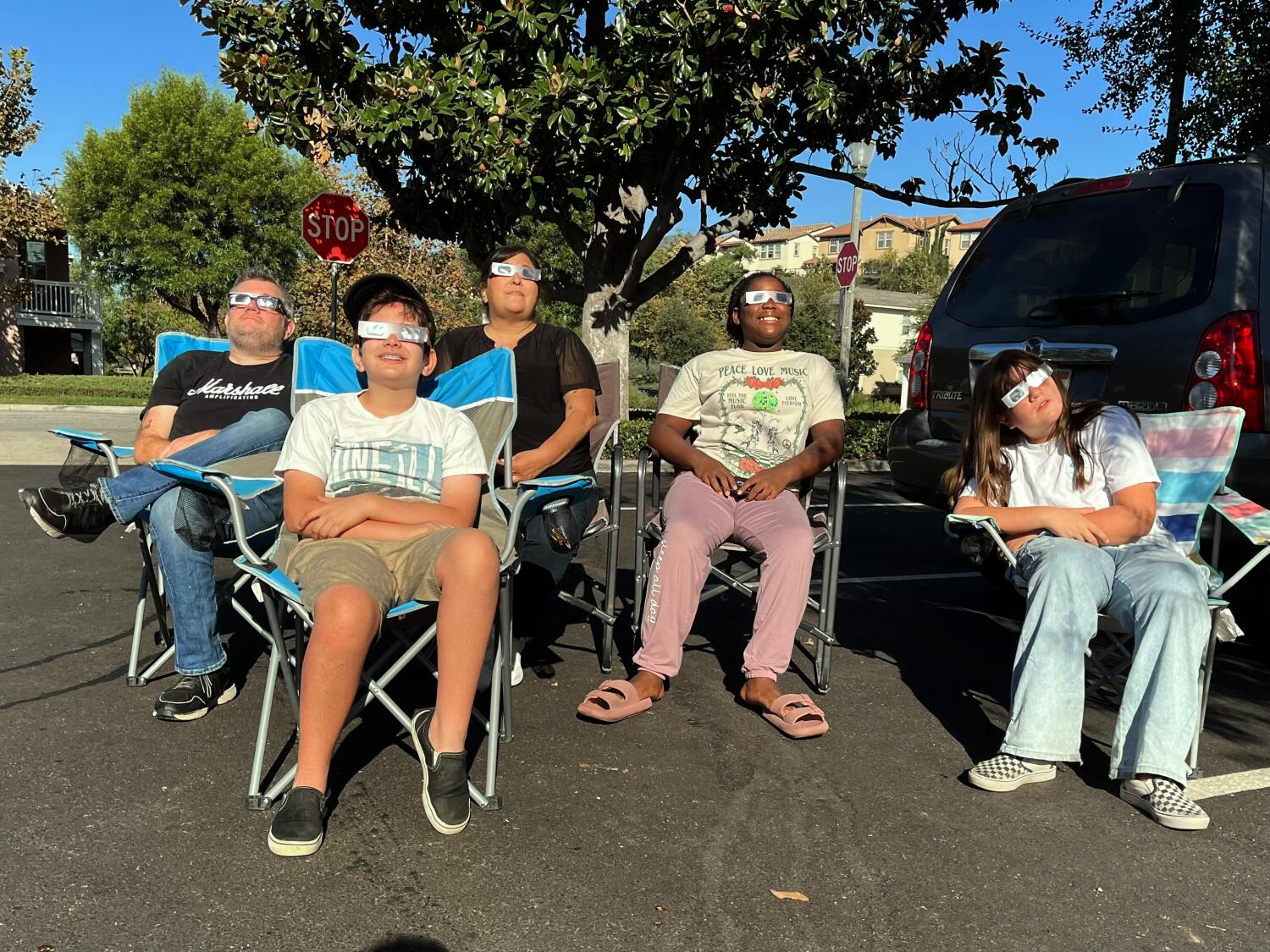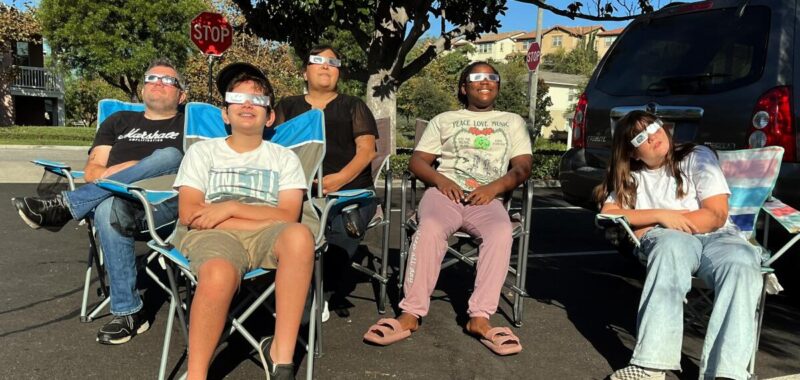
Millions of people across the United States will collectively look up at the sky Monday — wearing the necessary protective glasses, one hopes — to witness a rare total solar eclipse.
And although California won’t experience the phenomenon of totality, there’s still plenty to see.
A total solar eclipse happens when the moon passes between the sun and the Earth, completely blocking the face of the sun and casting a shadow across a wide strip of the planet below. For people in that strip, known as the path of totality, the sky will become dark as night and the temperature might drop.
Outside the path of totality, people on the daylight side of the globe will experience a partial eclipse in which the moon covers a portion of the sun. In Los Angeles, this will be visible starting at 10:06 a.m.
A substantial blocking of the sun will be obvious by 10:39 a.m. and will peak at 11:12 a.m. By 12:22 p.m., it will be over, according to the Griffith Observatory.
“It’s an opportunity to see firsthand our place in the universe,” said Paul Robertson, an associate professor of physics and astronomy at UC Irvine. “We’re sitting on the surface of this rock that’s careening through space at a speed of 30 kilometers per second, and we’re doing this sort of gravitational dance with these other giant bodies.”
During a partial solar eclipse, we can see the Earth, sun and moon “at the same time interacting in a way that they usually don’t,” Robertson said.
The buzz around this celestial event has been palpable, for both the scientific possibilities and the rarity.
The last total solar eclipse that crossed the contiguous United States was in August 2017, according to NASA. Another one won’t cross again for 20 years.
The eclipse will begin over the South Pacific Ocean and will move diagonally across Mexico, the United States and Canada. Mexico’s Pacific coast will be the first location in continental North America to experience totality, which will happen there around 11:07 a.m.
The eclipse will enter the United States in Texas and make its way through Oklahoma, Arkansas, Missouri, Illinois, Kentucky, Indiana, Ohio, Pennsylvania, New York, Vermont, New Hampshire and Maine. A map on NASA’s website provides an approximate time that each location in the path of totality will see the eclipse.
More than 30 million Americans who live in the path of totality will get a chance to experience a total solar eclipse, and many others are preparing to travel to see the phenomenon. Cities in the path are expecting an influx of visitors and major traffic jams as people flood to those communities to get a glimpse of the scientific wonder.
Colleges and science centers across California, including UC Irvine, Cal State Los Angeles and the California Science Center are hosting eclipse viewing parties.
Unlike elsewhere in the country, where cloudy skies risk spoiling the view for eclipse chasers, forecasters are predicting sunny skies in Southern California throughout the day.
Adequate eye protection is a must to view the eclipse directly.
People should obtain eclipse glasses or handheld sun filters, but take caution to buy them from reputable retailers and inspect them for any damage prior to viewing the eclipse. The glasses should comply with the ISO 12312-2 international standard, according to NASA.
People without protection can still view the eclipse indirectly through a homemade pinhole projector. And even if you do have eye protection, experts say, you shouldn’t gaze at the sun for more than a few moments at a time.
Past eclipses have enabled scientists to study the sun’s structure, provide the first proof of Einstein’s theory of general relativity and even discover helium decades before the element was found on Earth.
Robertson can’t quite put his finger on what stirs such emotions among people who have witnessed a total solar eclipse. During the 2017 eclipse, he said, people in his viewing group were brought to tears by the sight.
“You can see the pictures and the pictures are really spectacular,” he said. “But there’s just no substitute for seeing it in person.”
Times staff writer Rong-Gong Lin II contributed to this report.

